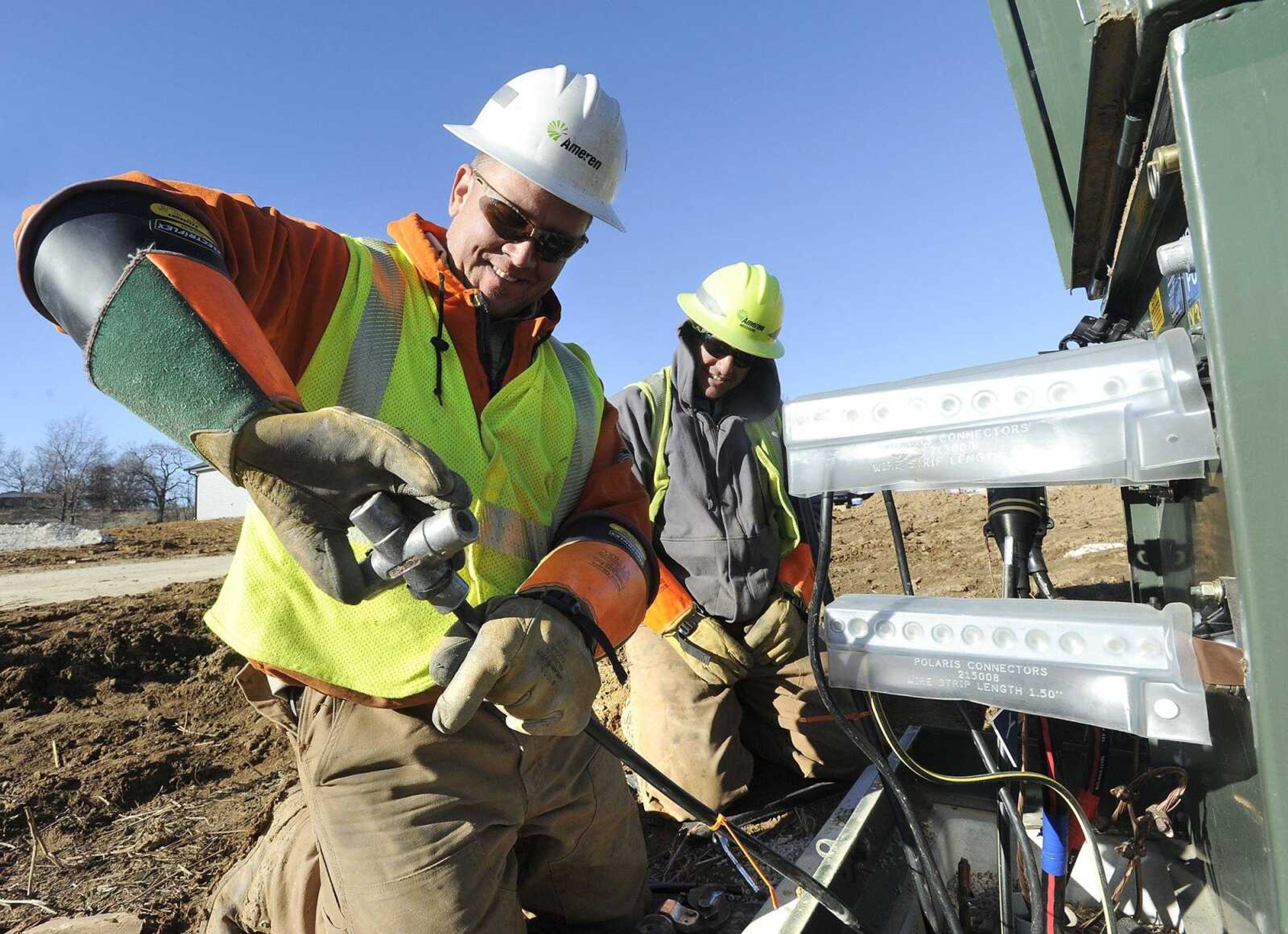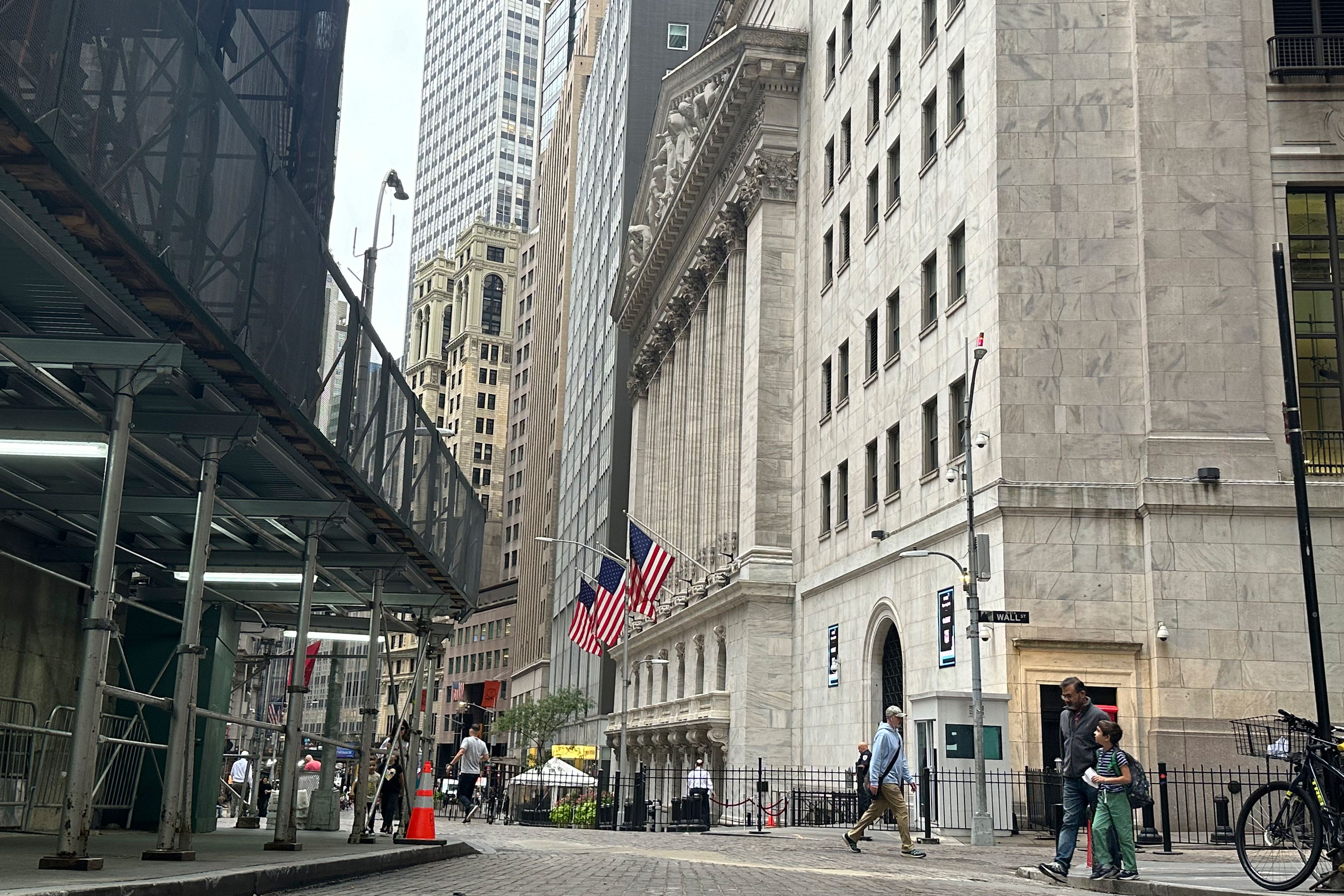The human race does not hibernate for the winter.
While many people work indoors and can avoid the worst of winter's bite, not everyone can retreat with a cup of hot coffee in the face of ice, snow and cold.
Others put on their coats, caps and gloves and go about the business of restoring power outages that accompany winter storms, clearing streets and fixing potholes and faithfully delivering the mail during some bleak times.
"If the power's out, we got to go out there no matter what," says David McKay of Jackson, who has worked as a lineman for Ameren Missouri for the past 15 years.
McKay, one of 17 Ameren Missouri linemen in the Cape Girardeau area, was among the crews that had to tackle the calamitous aftermath of the 2009 ice storm that left 34,000 AmerenUE customers without power in Southeast Missouri and called for the replacement of 5,500 utility poles.
He's among the workers in the area who must deal with the many faces of Mother Nature on a year-round basis.
"We work in the heat, in the rain, in the cold, just a whole spectrum over the course of the year, but the interest right now is with the cold," says Stan Polivick, assistant director of the City of Cape Girardeau Public Works Department. "We make sure some of our safety meetings through the fall and early winter, we focus our attention on cold-weather working conditions and things to look out for, your coworkers. We make sure everybody is working together."
The department provides street, sewer and stormwater repairs, among other services, and it does more than issue safety advice for employees. Polivick says there is a uniform budget to buy the workers' clothing, which ranges from shirts, hats and coats to bib overalls.
"We have a shopping list, if you will, and each one can get what he wants or needs," Polivick says. "Typically they do make sure that they've got the clothing for the cold-weather work."
Polivick says the department tries to be mindful of the work assigned, avoiding large-scale projects during the winter months and instead focusing on smaller jobs like street repairs that can be interrupted and resumed to allow for warm-up breaks by workers. On colder days, workers may spend the first hours of their eight-hour shift performing tasks inside before heading out.
"Single digits is something that's going to get your attention, in particular the wind chill," Polivick says. "Single digits and a strong wind, we're going to try to give them some assignments that aren't going to put them out in the outside environment too many hours at a time."
That's not always an option for Russ Burger, the superintendent of electric operations for the SEMO division at Ameren Missouri.
Burger, of New Hamburg, Missouri, started as a lineman in 1988 and served in that capacity for 15 years before working his way into a somewhat warmer environment.
Burger says the company addresses nutrition and stretching, which can be vital in cold conditions, as part of its worker safety program. More visible is the extra help on crews in extreme winter conditions that allows for workers to rotate and warm up in a truck without interrupting the effort to restore power. Ameren Missouri also supplies workers with the necessary clothing to stay warm, along with warming packets for cold hands and feet, which Burger remembers all too well.
Linemen must wear steel-toe shoes and in certain situations can not wear insulated gloves, which restrict movement, as does other warmer clothing.
"What we do as a linemen, we wear rubber gloves and we actually work on the lines by hand when they're energized," Burger says. "And a lot of times if you have too much clothing on it kind of restricts your movement when you're rubber gloving in the primary zone. You kind of have to reduce the layers on your arms, your sleeves, so you can have the mobility to complete your work, and when you're up in the air in a bucket, you're catching a lot more wind than you are on the ground, so then you naturally have to have additional warmups during that period when it's bitterly cold, because first of all your hands are inside of rubber gloves -- you know how cold that gets. So there are definitely challenges out there, but Ameren supplies us with all the safety equipment and flame-retardant clothing necessary to do our job."
And as is with any job, there is no substitute for experience. And that applies to working in cold conditions.
"You just learn what it takes to keep yourself warm and keep yourself going," Burger says.
Burger says there is a mental toughness that one must have in certain situations, resigning to a long night or stretch when ice storms take out power on a massive scale, such as in 2009 when pencil-thin lines were caked with 4 1/2 inches of ice, and times when a new fallen branch destroys work already completed.
"Some of the most miserable conditions is working in a 40-degree rain and you have a wire job in front of you," Burger says. "There's hardly any way to stay dry."
Layering is the word of choice when workers talk about staying comfortable outdoors. The layers are personal preference. Good old-fashioned waffle thermal underwear, coveralls and Carhartt hooded jackets, to fleece and newer breathable, stretchy base-layer options, Thinsulates and high-tech waterproof materials such as GORE-TEX and reflective materials like Omni Heat are all among the vast array of layering options.
Ross Peterson, a city carrier assistant U.S. Postal Service worker in Cape Girardeau, grew up in Minnesota and is accustomed to cold conditions. He says he starts out with six or seven layers and will remove them depending on the type of weather and the amount of exertion, looking to avoid perspiration.
He says he also brings a backpack to work to have clothing for a variety of unexpected conditions.
The post office also provides cleats for icy conditions, but early-morning frost on lawns and painted surfaces also can make things interesting.
"When you're going up and down people's porches and steps all day long, there's just a lot of different little things to look out for," Peterson says. "A lot more tricky situations than I thought of, for sure."
Connect with the Southeast Missourian Newsroom:
For corrections to this story or other insights for the editor, click here. To submit a letter to the editor, click here. To learn about the Southeast Missourian’s AI Policy, click here.









